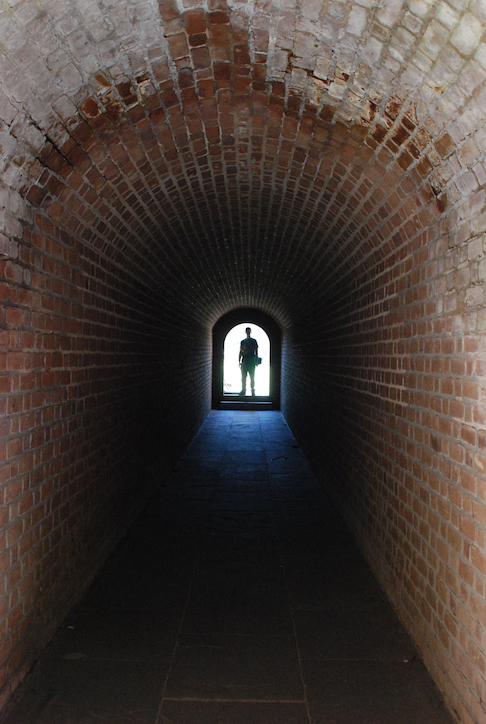
One young man sits alone during a mentoring session — even though he didn’t yet have a mentor at this time. Which reminds me: Guys, we need you, too!
I always thought I would study engineering when I was younger. I took what today are STEM classes – chemistry, calculus and anything I could get my hands on to make a technical future possible.
Until Day 1 of engineering school orientation at Texas A&M. That’s when I learned that, unless I declared an area of specialization that day, mine would be Aeronautical Engineering.
At which point I promptly changed my major — to journalism. Never looked back.
Starting college is one thing
It took me twice as long as most people to earn just one degree, but I did eventually finish. What I wished I’d had in high school, though, was a college and career counselor.
I don’t know if this support system is any better now than 30 years ago, but why doesn’t anyone tell you to study what you’re naturally good at? I mean, I got the news from a friend of my brother who hardly knew me!
Still, even if you get into college, it’s a whole other thing to stay in. There could be a whole slew of reasons why it’s so hard, but in my case, my dad was diagnosed with terminal cancer in what would’ve been my junior year. For two years, I worked odd jobs trying to help support my mom before realizing I wasn’t going back to TAMU and that I would have to forfeit my scholarships.
Perhaps feeling a bit rebellious, I tried next to travel the world as a flight attendant, only to ground my own travel career when I realized grief wasn’t a license to run away from reality.
Thank goodness my dad left me with perseverance. It took something like five tries before I earned my bachelor’s degree – moving from city to city, school to school, earning credits, credits not transferring, withdrawing, re-enrolling. What a wild ride. Then I got married, still with two years of school to go.
I only hope my mentee has that “counselor”
So, that was me. Now, I mentor someone else who could very well face a first-generation college student scenario like mine. The difference is, this time someone will be there to catch her and keep cheering her on.
When we meet each month during the school year, a common theme in our conversations is how life often doesn’t run in a straight line…it’s a kind of winding thing. But we keep getting up and going — right turns, wrong turns…we keep going.
And she can totally do it. She can nail university studies. Heck, she could nail law school. I mean, this girl is smart and driven, and she can do pretty much anything she wants. Well, with the proper support system around her.
Family is (almost) everything
Thank goodness her parents are constantly encouraging her to excel in school so she can continue her studies in college. But even they don’t know what to expect or how to help her prepare.
That’s where Mentor 2.0 comes in.
I’d been seeking a mentoring opportunity for years. It started when I was a student at the University of Houston, where I eventually graduated, and where I’d seen a sign recruiting tutors for high school students at a school across the highway from campus.
Since way back then, I would get on mailing lists and wait for programs to spin up, when in 2016 I finally heard about Big Brothers Big Sisters’ Mentor 2.0 program.
The big sell for me was that Mentor 2.0 specifically targets college-bound high school students who may lack the support network needed to get them to and through college.
And honestly, Mentor 2.0 is really doable for the average working person:
- One supervised, face-to-face meeting monthly (with mentors, mentees and super-committed school faculty and BBBS staff);
- Simple, weekly assignments to collaborate on via a secure online environment, and
- An optional note to the mentee in between assignments, via a secure chat tool, to help them stay encouraged.
The time commitment is usually about 30 minutes a week, with once-a-month meetings at about two hours each.
Now, don’t flinch: This is a four-year commitment. I mean, we’re not stuffing envelopes, friends; we trying to affect a whole lifetime, right? That takes a little commitment. For me after just one year, the payoff has already been huge.
So glad I did it
This is seriously one of the best commitments I’ve ever made. Not only are my mentee and I well matched (similar interests, goals and personalities), but she inspires me so much and makes me want to give her all the support I didn’t know how to find myself. (Heck, she even inspired me to return to school!)
I won’t lie, though: All the “woulda, coulda, shouldas” sometimes get in my head. It sometimes takes me a little while to shake it off and remember this is not about me.
An opportunity with loads of dividends
If you’re in a position to influence a young person’s life, do it. If you live in Colorado and can do it through Mentor 2.0 I’d be more than happy to connect you to this fantastic program.
The thing is, you just never know which other lives you might be affecting besides your student’s. Because when the mentee’s life starts to change, they will start to see themselves as an agent of change in the world.
And then there’s just no stopping them.
Help them get started. Join us.









You must be logged in to post a comment.